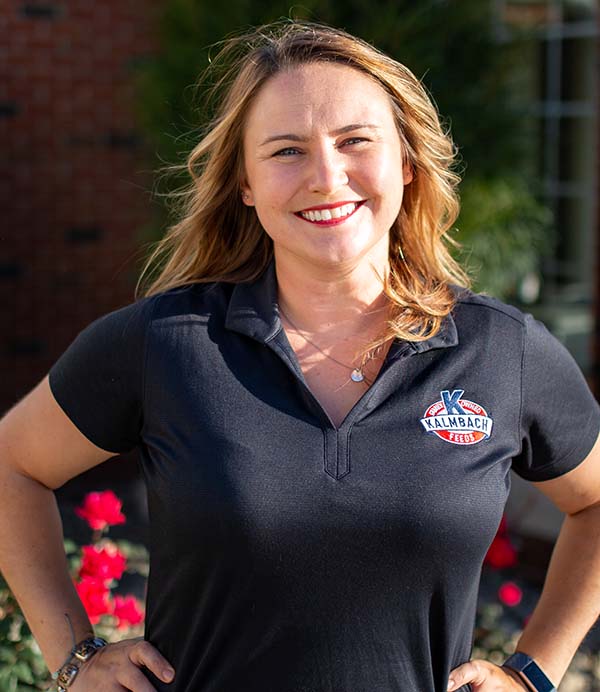Raising Show Rabbits: Optimizing Your Rabbits’ Condition

Picture this: You are in the show ring with your rabbit. The judge has already narrowed your class down to five rabbits and one of them is yours. The judge walks up and down the line, handling each of the five rabbits to select the class champion. They then begin to talk about your rabbit’s condition, and how it stands out from the others in all the right ways. The ring steward hands you a BLUE RIBBON!
How did you get there? When it comes to selecting and showing rabbits, there are many dynamics to consider. Genetics, health, nutrition, and handling will all play important roles in a successful show season.
Selecting Genetics
Whether you are planning to buy your show rabbits or you are picking the best of your own herd, it is important to have an understanding of your breed’s Standard of Perfection. The Standard of Perfection is an American Rabbit Breeders Association (ARBA) publication that defines the qualities that make a “perfect” rabbit for each specific breed. Knowing what kind of topline to look for, ideal wool length and texture, and proper conformation will give you an advantage when selecting your rabbit. Additionally, you do not want to select animals with poor qualities for breeding within your herd. Certain traits like off color markings, inappropriate ear length, and poor breed conformation are easily passed on to offspring and are grounds for disqualification in the show ring for some breeds.
Rabbit Health
You could have a rabbit that meets every Standard of Perfection for its breed, but if it is in poor health, it will not succeed in the show ring. It is of utmost importance to make sure that your rabbits are well maintained. If you are bringing new rabbits into your herd, it is a good idea to have a strict biosecurity protocol to keep your herd – and the new addition(s) – safe and healthy. Quarantining new rabbits separate from the rest of your herd for 30 days will give you the opportunity to see that they are healthy and settled in before introducing them. If they do become ill during your 30-day quarantine, then you may have spared the rest of your herd. Keeping manure cleaned up and intermittently disinfecting pens, food bowls, and water bottles will also help keep bacteria at bay and viruses from spreading. Temperature fluctuations and moisture in their environment can cause stress in your rabbits, which can trigger underlying conditions. Finally, talk to your vet about treating for parasites and coccidia in the Spring and/or Fall to help you stay ahead of issues caused by their infection. Parasites and disease can also lead to inadequate nutrient absorption.
Nutrition and Condition
Now, let’s take a look at your rabbit’s diet. When selecting a rabbit food, you want to make sure that you pick a feed that suits the breed you’re feeding. Smaller breeds and dwarf breeds do not require the same high level of energy that faster-growing larger breeds do. If you are not providing any kind of hay or forage, higher fiber feeds are better suited to make up for that. Products that are labeled as “Complete Feeds” are designed to meet all of your rabbits’ nutritional requirements with no need for additional supplementation. You will want to be careful about the amount of fruits, vegetables, and other treats that you offer to your rabbit. Think about sitting a child down at a table with a bowl of salad and a bowl of ice cream – you know that the ice cream will get eaten every time. By offering too many treats, you could actually be diluting out the overall nutrients in their diet since less is being eaten of the fortified dietary component.
Rabbit Handling
You don’t want to be nervous on show day and you don’t want your rabbit to be nervous either. Make sure that you handle your rabbit regularly the same way that you expect the judge to handle your rabbit in the show ring. Pick it up multiple times per day, carry it around, and practice your showmanship. You will want to familiarize your rabbit with being posed and looked over. Poses vary by breed, but the same method of inspection is used in most show rings.
Here are the areas that you will want to focus on, according to the ARBA:
- Carry your rabbit with proper support by tucking its head under one arm and placing your other hand underneath your rabbit.
- Pose your rabbit with the front feet even with its eyes and its rear feet placed firmly on the table.
- Check both of your rabbit’s ears and read the tattoo (which should be located in the left ear).
- Turn your rabbit over onto its back in a slow, controlled motion, resting it with its back on the table.
- Check your rabbit’s teeth by gently separating its lips with your fingers to show both upper and lower incisors.
- Check the straightness of your rabbit’s front legs, check toenails, pads, and dewclaws.
- Check your rabbit’s belly, gently palpate under its jaw, chest, and abdomen.
- Check the straightness of your rabbit’s rear legs, toenails and hocks.
- Check your rabbit’s gender by exposing its genitals.
- Extend the tail and move it side to side.
- Gently turn your rabbit back over to its originally posed position.
- Smooth your rabbit’s fur by running your hand from the front to the back of the rabbit.
